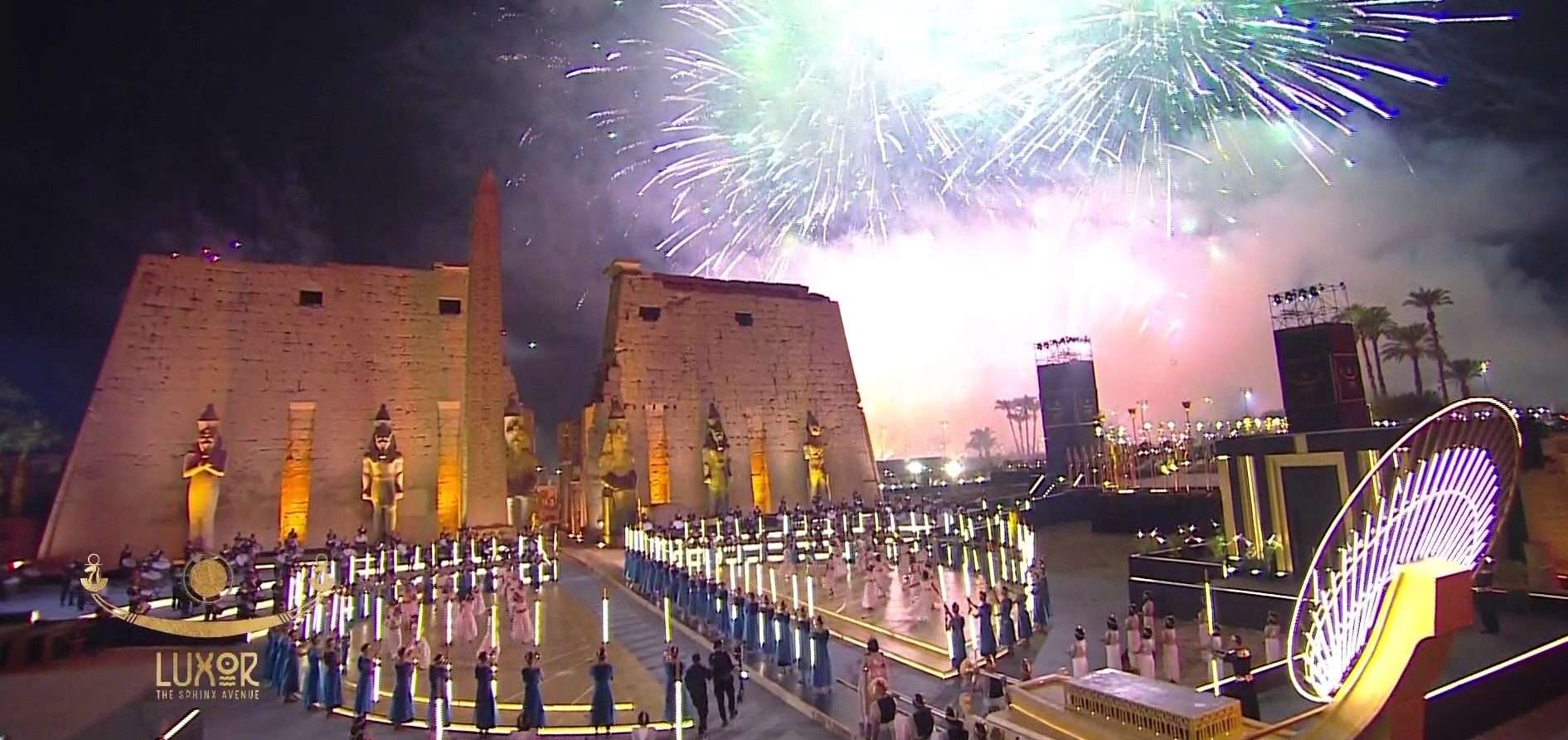On Thursday, Luxor lived a phenomenal celebration of bringing the 3000-year-old Opet celebration to life again for one night on the occasion of Opening the Road of Sphinxes.

The audience can detect the big challenges the organizers faced and the sacrifices they made for this ceremony, especially after the blowing success of April's Golden Royal Parade.

Beautifully, the directing team succeeded in making use of the visual identity and heritage of the city for directing one more Opet to screen; so costumes carried those definitive colors of Ancient Egypt such as blue, gold, black, white, and yellow. IIn addition, the design of the costumes kept the original ancient Egyptian styles with adding flawless contemporary touches.

As Opet started from the Karnak to the Luxor Temples for celebrating Amon, Mut, and Khenso, all dances, performances followed the same ancient route once again with blending most breathtaking technologies in coloring, and lighting.

The dancing harmony between the light and colors made the city more shining, brighter and gave the audience the feeling of witnessing a scene from 3000 years ago, not from today's celebration.

Moving to the employment of the music, during the early promos of the event, building the whole riffs on a pop culture composition was brilliant.

The main orchestral and symphonic riffs were performed by all brass and wind instruments such as trumpet, or mizmar influenced by Mohamed El Ezaby, and Reda Ensemble for Folk Arts' "Luxor Baladna," which introduced to the audience that today's Opet celebration honored all cultures in Luxor starting from the grandest, the Ancient Egyptian, to the pop.
https://www.youtube.com/watch?v=-QURqrt1odE
Moreover, there were huge use of traditional Egyptian instruments, especially those that were used in Ancient Egypt such as dufs, harps, flutes, and strings.
Also, the addition of Ancient-Egyptian vocalized prayers and chanting such as Amon Hymns and prayers, and Hatshepsut's one enriched the vibes of the celebration as if the audience were placed in a time machine brought them back to 18th-Dynasty times in Ancient Egypt.
The breathtaking serenity and honoring in Amon-dedicated prayers, and the respect in hymns dedicated to the legendary Queen showed that her temple witnessed the events of the celebration.
Moving between events and rituals taking place inside temples, outside temples, on the banks of the Nile, and inside linking passages gave the audience a detailed vision about the importance and the accuracy of this group work, as everyone was linked to the other like a puzzle.
https://www.youtube.com/watch?v=y6gZErDpdLU
All selected singers delivered breathtaking performances such as Ezz Al Ostoul who chanted deeply, and profoundly Amon prayer, on the other hand, Haidy Mousa stole all sights with her majestic appearance, and her amusing performance of Hatshepsut hymns as if she carried the soul of the legendary queen.
https://www.youtube.com/watch?v=iyZRG8A_MH8
Closing the whole orchestra with covering "Luxor Baladna" by a talented, and skilled singer like Wael El Fishny was brilliant. El Fishny presented Upper Egyptian musical style, best known for "Kont Feen Ya Waa'd" for Tayee' series, and "Safar Habiby" for Wahet El Ghoroub Series. So, his appearance and performance were like bringing all audiences for all those fantasies of place and time to an enjoyable moment from reality.
And, as "Luxor Baladna" riffs were the base of the whole musical interludes, background, and soundtracks, all moods of music closed together in one riff, "Luxor Baladna" main bridge.
https://www.youtube.com/watch?v=YmwWPJesg9Y












